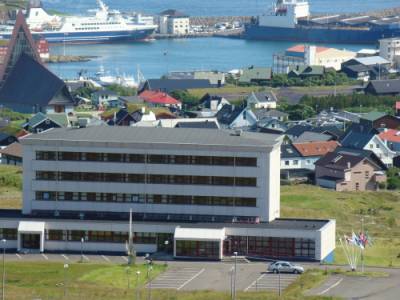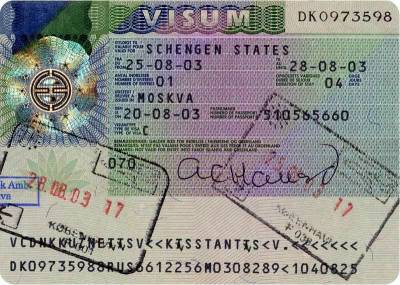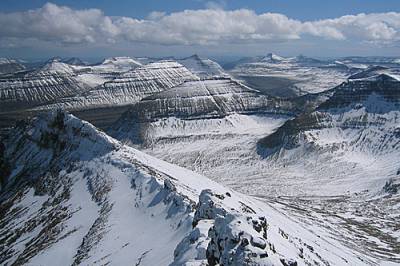Faroe Islands
Faroe ostrovovv climates - temperate maritime, with cool wet winters and cool summers. The coldest month - January, temperatures from 0 ° C to +4 ° C, the warmest month - July temperature of +11 ° C to +17 ° C. The annual rainfall is 1600-2000 mm., Precipitation (mostly as rain) are around 280 days a year, most of it falling between September and January, frequent fogs.
Due to the tropical sea of the Gulf Stream, the water around the islands all year round has a temperature of about +10 ° C, which mitigates climatic conditions and provides ideal living conditions for fish and plankton.
Due to the tropical sea of the Gulf Stream, the water around the islands all year round has a temperature of about +10 ° C, which mitigates climatic conditions and provides ideal living conditions for fish and plankton.

Visa
For entry to the Faroe Islands need a visa issued by the consular department of the Embassy of Denmark. Term of documents in the embassy - from 2 to 60 working days.
Required documents: passport valid for at least 3 months after the visa, the two profiles with photos, an invitation (tourist, private or official), and when you travel with children - a notarized consent of a parent. A trip with the children officio invitation is difficult. The usual length of stay for tourist invitation - up to 2 weeks, and the private - to 3-month officio - up to 2 weeks (the time for departure within 1 month).
Consular fees are charged simultaneously with the filing of documents in the case of a negative decision is not refundable.

Customs regulations
There are no restrictions for the importation of foreign and local currency is not, large sums must be declared. Allowed to export up to 50 thousand euros, it is necessary to prove that the same amount was imported or obtained through the exchange of foreign currency. If you are traveling from a country outside the European Union, or goods that are in the baggage, were bought on the ferry or airport and not be taxed, you have to pay fees when imported more than 1 liter of liquor or two liters of strong wine , plus 2 liters of table wine. You can also import duty free 200 cigarettes or 100 cigars or 50 small cigars or 250 grams of tobacco and 50 ml of spirits. All other products, including beer, to be in an amount not exceeding in 1350 kronor.
Holidays and weekends. Assuming that the Christmas, New Year and Easter, the Faroe Islands have no less than 20 days off, each of which the islanders converted to a holiday.
Main Faroese holiday - Olafsek, conducted July 28-29, when the normally reserved Faroese arrange this orgy of emotion. The festival is named in honor of Saint Olaf, who introduced Christianity to Scandinavia. Highlights include the festival boat race in which villages compete against each other, horse racing, numerous art exhibitions, dance and religious processions. In mid-July, the western two-day annual Faroe take Festanstevna festival, a local copy Olafsek.
Attractions
Klaksvik - the largest city in the Boreas - the largest of the sparsely populated and beautiful north-eastern islands of the archipelago. The city has 4.5 thousand inhabitants, and its harbor is always full of fishing boats. Church Kristianskirhya also worth a visit, it was built with the various elements of Faroese style, and gables reminiscent of the structure of the Vikings. The stone walls remind Magnus Cathedral Kirkyumbure, gable windows project was inspired by the traditional contours of the windows of boat yards, and the interior murals were originally created for the church in Denmark Danish artist Joachim Skovgardom.
Fyugloy ("Bird Island") has earned its name for the multi-million colonies of sea birds on its majestic cliffs. The most beautiful 450-meter cliff in Eystfelli and 620-meter cliff in Klubbin, from breathtaking. The Cliffs at Klubbin descend from the plateau of this picturesque mountain range, which is covered with arctic vegetation. In the north-eastern tip of the island, Eystfelli, a wide natural amphitheater rises up high, near the lighthouse there is a natural stone arch in the rock, but far from it with a little imagination you can see a "profile egiptskogo Pharaoh," created the natural breaks of the rocks.
Lundaland is Mikineshilmure - an island connected to the main island pedestrian bridge height of 24 meters, having its own name - Helmgev. Walk on it - one of the best excursions on the islands, with magnificent views of the surrounding landscape and one of the most dense bird colonies in the world. If you have several hours of free time, it is noteworthy ascent to the highest point of the island, 560-meter hill Knukur, which offers fantastic views, or visit Steynskogurin ("Stone Forest") near the north coast of Korkadalur. To the east of the mountain landscape Knukur becomes quite steep, so walking to the eastern end of the island is not recommended without an escort.
